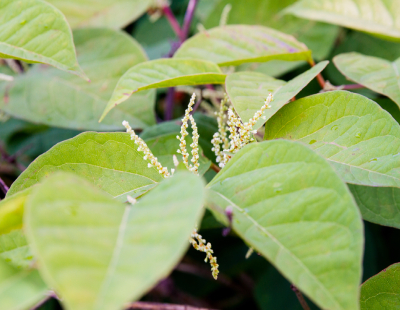.jpg)
Concerned homeowners and gardeners are frequently mistaking common garden plants such as bindweed, dogwood and lilac for highly invasive Japanese knotweed, research claims.
Analysis of data from Environet’s Free ID Service, which invites members of the public to send in a photo of any suspicious plants in their garden for expert identification, has shown that bindweed is by far the plant most commonly confused with knotweed, accounting for one in four of all the photos received. Knotweed was identified correctly in just 16% of cases.
Bindweed shares a number of characteristics with knotweed, including rapid growth and vivid green heart-shaped leaves, but the key difference is that while knotweed is self-supporting, bindweed needs to wrap itself around other plants, walls or structures. When it comes into flower, bindweed has large, trumpet-shaped flowers while the small cream-white flowers of knotweed, appearing only in late summer, grow in dangling clusters. Whilst a nuisance, bindweed has no capacity to cause damage to property.
Dogwood, meanwhile, which accounted for 9% of the photos sent in for identification during 2023, is a woody shrub with bright red stems. It is easily mistaken for knotweed, the stems of which are flecked or tinted with red during the growing season.
Other plants commonly confused with knotweed include lilac, Russian vine, dock, buddleia, bamboo, Himalayan balsam and even common ivy, which is found in most British gardens. At this time of year, when new growth begins, the red shoots of knotweed also look very similar to peony.
Failure to identify and treat Japanese knotweed as soon as it appears will result in it spreading and quickly becoming established.
Knotweed has the power to damage buildings, sheds, walls, patios, as well as underground services such as pipes and drains. Mortgage lenders will offer loans on affected properties, but only if a professional treatment plan is in place with an insurance-backed guarantee. Knotweed can also leave homeowners at risk of litigation from neighbours if they allow it to spread from their garden into an adjoining property.
Emily Grant, director of Environet, said: “While most people have heard of Japanese knotweed, identifying it correctly is another matter. Very soon, when the ground temperature begins to rise in March or April, knotweed will emerge from the ground and by early summer it will be growing rapidly – in some cases as much as 10cm every day. The longer it’s left, the further its underground root system will spread and the more it will cost to remove.
“The best way to protect your property is to research knotweed identification online and be vigilant, particularly if a new plant appears this spring that you don’t recall seeing before. Those buying and selling property should also carry out thorough checks or commission a professional survey for complete peace of mind.”




.jpg)





















Join the conversation
Please login to comment